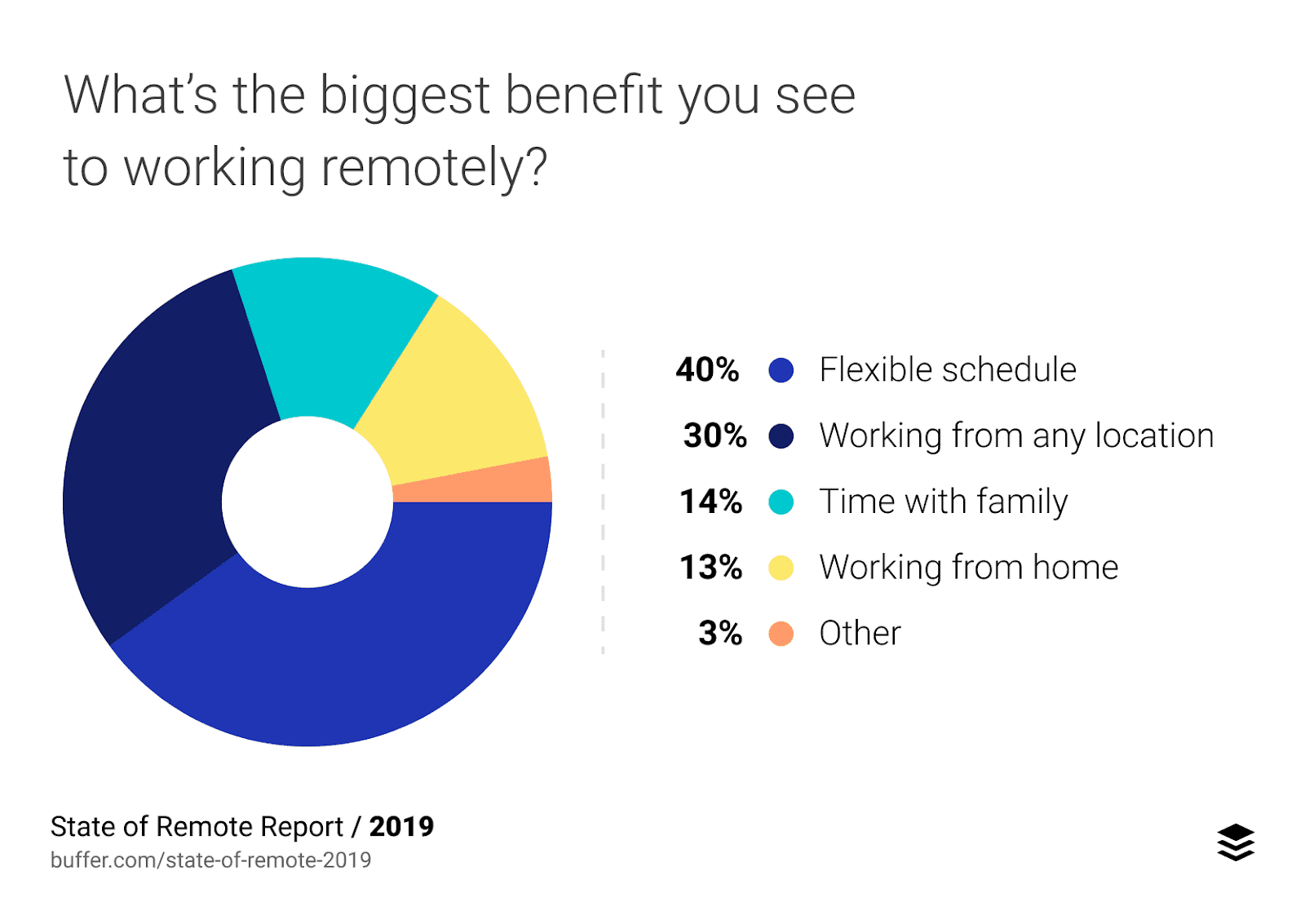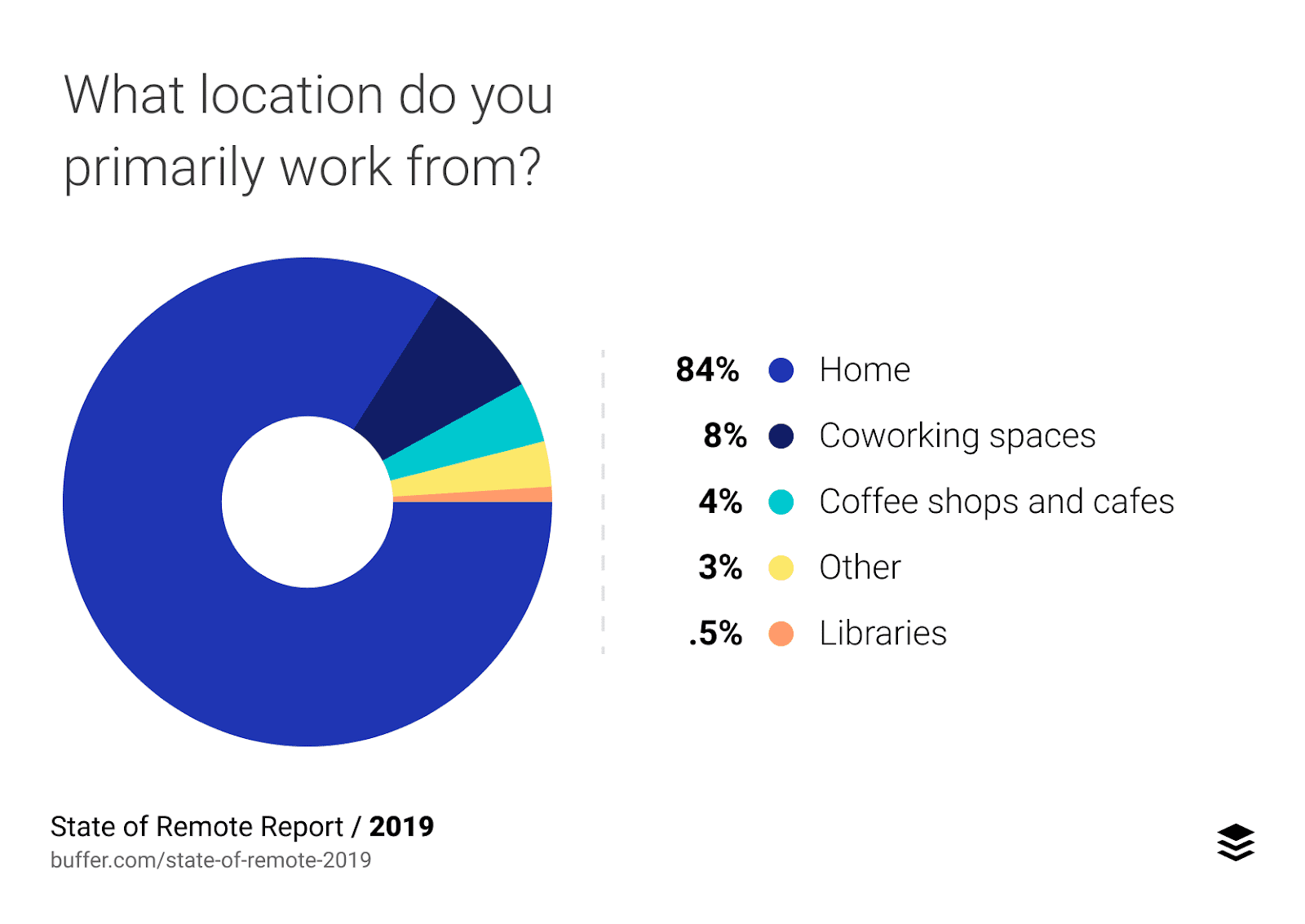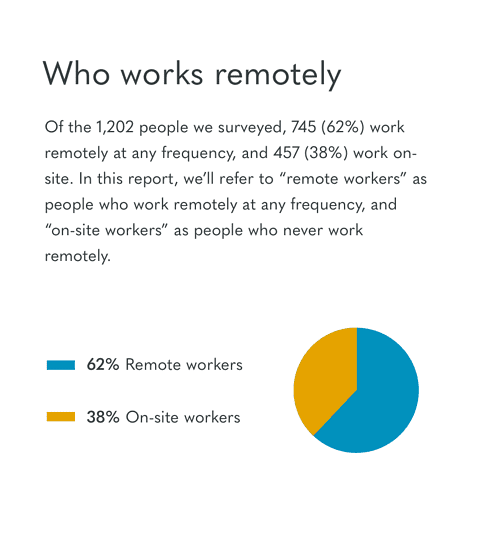Hiring Remote Resources In 2021 – The Strategies
Remote work opportunities have wide opened the gates for future recruiting. Various firms, especially the tech industry had already started working remotely with their teams across the globe. The change was the only consistent thing that happened during the pandemic. COVID 19 accelerated the shift towards remote working, which enabled the current employees to work from home. Now, 80% of the employees desire to work from home even after the COVID 19 crises are under control. This encouraged the recruiters to develop new remote hiring strategies that would benefit them in the long run. It is estimated that by the end of 2021, 25- 30% of jobs will be remote.
Let’s peep into some of the interesting stats about remote work:
 Companies allowing remote work have 25% lower employee turnover than those that don’t.
Companies allowing remote work have 25% lower employee turnover than those that don’t.- 16% of companies exclusively hire remote workers.
- 40% of people feel the greatest benefit of remote work is the flexible schedule.
- 76% of workers would desire to stay with their current employer more if they could work flexible hours.
- People who work remotely at least once a month are 24% more likely to be happy and productive.
- 4.3 million people in the USA work from home at least half the time.

Remote Hiring Strategies to Watch Out in 2021
1. Skill-Based Hiring
According to Deloitte’s report “53% of Global Leaders believe between half and all of their workforces need to change their skills and capabilities in the next three years.” Gartner also discovered that “Top priority for the majority of the HR leaders is to build critical skills and competencies in their firms.
Many huge firms like Google, Apple, IBM, etc. have already opted for skill-based hiring instead of using academic degrees as a way of measuring the skills of candidates. Skill-based hiring can allure talented remote candidates with better soft skills like communication, problem-solving, as well as critical thinking. Skill-based hiring practices can help reduce recruiting expenses and time to hire. It can fill up the positions quicker, fill the existing skill gap and increase employee engagement along with retention.
2. Rethinking Remote Hiring Capabilities
According to a report, 62% of people intend to work remotely. 74% of the firms intend to make remote work permanent. Firms need to scale up their remote hiring capabilities by selecting and integrating the right tools to deliver an effective remote hiring model. The HR technology market is estimated to be a $250 billion market filled with different solutions specifically designed to meet the needs of remote workers. Work with IT leaders and hire only when required rather than hiring just to fill the vacancies.
 Select and integrate tech tools that render a set of capabilities to source, recruit, access, interview, as well as onboard the remote candidates smoothly. Cloud-based tools with automation features can contribute to efficient processes. Blending these tools with an analytics tool can help monitor, analyze and improve the remote hiring strategies.
Select and integrate tech tools that render a set of capabilities to source, recruit, access, interview, as well as onboard the remote candidates smoothly. Cloud-based tools with automation features can contribute to efficient processes. Blending these tools with an analytics tool can help monitor, analyze and improve the remote hiring strategies.
3. Tech-led Hiring
The shift towards remote hiring and the quick adoption of new tools build an opportunity for firms to include workforce analytics technology. Firms should use analytics to analyze multiple data sets across various systems, such as pre-employment testing tools, ATS (Applicant Tracking System), etc.
Some of the best pre-employment testing tools include:
- TOGGL HIRE – TOGGL HIRE uses short skill challenges as their initial filter to go beyond resumes. With this tool, firms can hire developers, marketing, sales, as well as, customer support executives. Industry experts have designed a variety of pre-built skills test templates for potential candidates.
Price – It offers free plans as well as paid plans. Paid Plans starts from $99/month - QUODEIT – It helps firms to prescreen the software developers with automated coding tests. There are a lot of free tests and questions over here. Firms can also buy customized tests. Avoid taking interviews of people and let the data do the work with QUOTEIT.
Price – It doesn’t offer free pricing but its price is as cheap as $5/candidate. - HACKER RANK – It offers multiple programming tests so firms can quickly hire the right candidates. It offers free and custom tests and questions. It helps match skilled developers with the firms. It helps to access candidate skills in 35 programming languages with downloadable reports.
Price – It offers a 14-day free trial. After the free trial, the price depends upon the requirements of the firm.
Some of the best Applicant Tracking Systems include:
- Greenhouse – It is one of the best ATS for mid-market enabling their customers to take advantage of third-party applications with no upcharge. Mostly every HR Tech that integrates with ATS starts with Greenhouse. Its clientele includes AirBnB, Pinterest, Hubspot, etc.
- Workable – Workable ATS system is great for small and large firms. They have over 20,000 customers across the globe. They have integrated AI-powered sourcing capability while giving access to over 400 million candidate records.
- Recruitee – It is one of the best-in-class applicant tracking systems assisting firms with less than 1000 employees. Their product has an 18-day free trial so it is easy to start with. Their clientele includes Vice, Breitling, and Hotjar.
With an analytics-driven approach, firms can easily hire talent based on required skill-set, recognize skill gaps and talent shortage, analyze evolving patterns and need for future skill-set, efficiently redeploy internal talent, etc.
4. Strong Communication & Collaboration Skills
Time Zones can be a barrier to effective communication. But different countries, cultures, and backgrounds play a vital role while communicating with prospective remote candidates. The recruiters need to invest extra time, effort, and resources to understand where the candidates belong, their cultural background, their approach towards work and collaboration, etc. Learning different communication styles might seem a major challenge but in the long run, it may be of greater benefit for the organization by hiring people with diverse backgrounds. According to a study, “Diverse Teams are more likely to come up with more creative solutions”
Summary
- Many firms like Google, Apple, IBM, etc. have opted for Skill-based remote hiring because it can fill the existing skill gap within an organization.
- Select and integrate tech tools that render a complete set of capabilities to source, recruit, access, interview, and onboard remote candidates.
- Some pre-employment testing tools and ATS (Applicant Tracking System) can help to rapidly hire remote resources that could exactly meet the firm’s requirements.
- Strong communication and collaboration skills contribute towards hiring diverse talents remotely.









